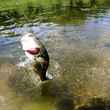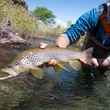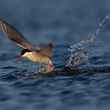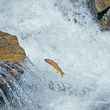A lot of us learned to fly fish on small waters. We cut our angling teeth on brook trout-laden creeks of Appalachia or maybe a high-mountain trickle somewhere in the Rockies. My first fly rod trout came from a tiny beaver pond in the headwaters of Colorado’s Taylor River, somewhere on the shoulders of Tin Cup Pass.
This little trickle likely wouldn’t have been fishable at all if not for the beavers that dammed its course and created the habitat suitable for trout. The fish was a stout little non-native brookie that, along with its brethren, had long ago pushed the native Colorado River cutthroats out of the stream. But to a kid more interested in the fish than the flavor, it didn’t matter. What mattered was the opportunity.
That little trickle — and thousands of others like them all across America—was protected by the Clean Water Act until the 2000s, when the U.S. Supreme Court issued a pair of rulings that left these sensitive waters vulnerable to development. According to the court, these small headwater streams — some of which run dry at certain times of the year—had no proven nexus with the “navigable” waters of the country, and therefore, they were not specifically protected under the Clean Water Act.
As anglers, we know there is, indeed, a connection between the headwaters of our great rivers and the rivers themselves, and so does the Environmental Protection Agency. It teamed up with the U.S. Army Corps of Engineers and proved that connection scientifically, as suggested by the court in order to restore protections to our headwaters.
This year, the EPA and the Corps produced a draft rule that will restore those protections to small waters under the Clean Water Act — the rule is in its public comment phase, and will be until October.
Unfortunately, rather than working through the established rule-making already in progress, some members of Congress who oppose the rule for largely political reasons wish to nix the process and leave our headwater streams vulnerable. In response, Trout Unlimited has produced a new report that shows just how vital these small streams are for trout and salmon habitat and for downstream water quality. The report includes maps from several states where headwater streams are particularly vulnerable to potential development, and it clearly demonstrates the connection between these small waters and the great rivers they eventually become.
While commenting on the EPA/Corps rule is important, we must first turn back the political attack on clean water from Congress — let your state’s delegation in Washington know that, as an angler and a beneficiary of clean water, you oppose their efforts to leave our headwaters vulnerable.
It will make a difference for you today, and for the next wide-eyed kid who pulls a brookie from a beaver pond on some tiny headwater stream years and years from now.





























Comments